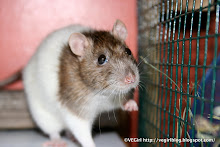As the title ought to imply, VEGirl standing for Vegan, Environmentalist, Gluten-intolerant girl, I am an environmentalist. I strive to use no plastic products, reuse paper with a blank side, and much more.
Although I home school, I go to a few clubs at the local middle school and am the student president of the environmental club, so it's my job to make the agenda, organize projects, etc. I have found, and am still finding, that eco-harming products are around every corner! When looking to save the earth, of course there's reusing, recycling, donating to organizations, you know, the obvious stuff. But then there's shopping, for food, I mean. Plastic packaged chips, cookies, bread, crackers, cereals, flour, dried fruit, chocolate chips around every corner. Some of these problems can solved with buying bulk (though those products come from bigger plastic bags sometimes), or ordering from companies that sell food in paper products.
These are helpful and all, however some baking ventures are made very difficult when you don't want to contribute to global warming. Such plastic packaged products as silken tofu (normal tofu, for that matter) and soy yogurt are being used by like minded bakers for texture and form. I have begun setting out on a VEGirl adventure to make gluten-free, vegan, sugar-free, low-fat, environmentally friendly baking. Sound impossible? Well, it's far from perfect, but I discover new eco-baking 'things' every day. Consider this post a little "progress report".
So, here are five tips on making your baking eco-baking:
#1 Make your own tofu. When you buy tofu in individual block, they come in plastic, as does silken tofu. Even the tofu in the bulk bins are from large plastic bags. It may take some effort to make your own tofu, but if your a tofu-monster, like me, and eat about a block of tofu a day, that's gets pretty expensive and plastic-y. It actually ends up being cheaper to make it yourself, but just be sure to buy organic soybeans, to avoid the nasty GMO's (genetically modified organisms). You can't make silken tofu, but you can adjust the softness and hardness of the tofu.
#2 Agave nectar has been a real problem. It is such a great sweetener, and it's suitable for my diabetic grandmother, who I want to make deserts for! The agave nectar available at grocery stores comes in a small plastic bottles, and they don't sell it in glass online. So, we ordered a five gallon bucket of nectar. I figure the whole pail will last me about a year, and at least I can reuse the bucket.
#3 I love brown rice syrup! It comes in a small glass jar at my local health food store, although I'm thinking to order it in a 5 gallon bucket online. First, though, I have to try brown rice syrup SOLIDS. How cool is that? I'll let you know how that goes. Brown rice syrup is a really great sweetener in baked goods. With a mellow flavor, a texture and consistency like caramel sauce, brown rice syrup dries brittle, so it's great in crispy cookies, such as my Snazzy Ginger Snaps. It also makes for a fantastic nut bar. Just toss together your favorite nuts and seeds (chopping is optional), your choice dried fruit, and if your feeling mischievous, a few chocolate chips. Add just enough brown rice syrup to coat and hold its shape in a pan. Let dry completely, or overnight. Cut into bars and enjoy!
#4 Buy fresh, loose, and ideally: local. Fresh produce is the best way to go, and you can buy loose, meaning you don't need to carry them in an icky old plastic bag. Try not to buy canned products, as they are lined with plastic, both harming to the environment and you! Things like coconut milk are difficult to make yourself, so experiment with a fresh coconut. When using fresh produce, you may find that a pleasant more intense flavor emerges in your baked goods.
#5 Buy bulk! In my Five Ways To Slash Your Plastic Intake, I talked about bringing a large bag of reusable shopping bags, bulk bags and empty jars to the grocery store for bulk buying. I highly encourage you to do this. It's all in one bag and has everything you need. Buying bulk, instead of buying individual (plastic) packages of food is so much better for the environment and creates much less cluttering garbage on your part. To store your bulk items, keep them in an airtight container. My family uses glass jars, which enable us to see what's inside, and we can label them with permanent marker, which washes off with a bit of effort. Glass storage jars are available online, but I think some are very overpriced (not all, but some). We just use old pickle jars (funny story, we got tons of them since my grandfathers friend used to own an Orange Julius), as well as half gallon jars, quart jars, and other miscellaneous ones.


0 comments:
Post a Comment